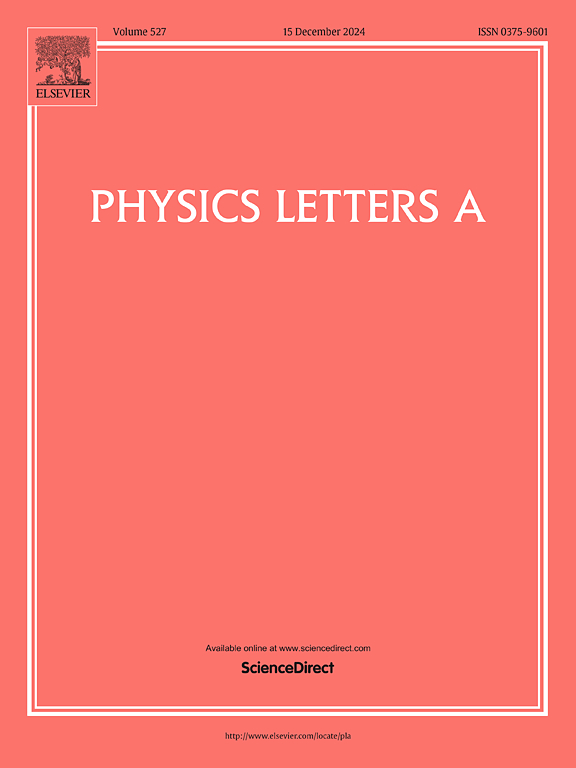利用三重和四重金属栅极功函数工程提高无结双环绕栅极 In0.53Ga0.47As 纳米管 MOSFET 的性能,以适应即将到来的 3 纳米以下技术节点的要求
IF 2.3
3区 物理与天体物理
Q2 PHYSICS, MULTIDISCIPLINARY
引用次数: 0
摘要
根据摩尔定律和国际器件与系统路线图 (IDRS),要将 MOSFET 尺寸缩小到 3 纳米技术节点,就必须引入并深入研究新的器件结构和先进材料。目前的研究重点是在无结 (JL) 和反转模式 (IM) 双围栅 (DSG) In0.53Ga0.47As 纳米管 (NT) MOSFET 上实施三重金属 (TM) 和四重金属 (QM) 栅工作函数工程技术。目的是使用 Silvaco ATLAS 3D TCAD 分析栅极长度为 3 nm 时的漏极电流 (ID) 特性。为了对 JL 和 IM In0.53Ga0.47As NT 进行公平比较,对 TM 和 QM JL In0.53Ga0.47As NT 的掺杂浓度进行了调整,以实现两个特定目标。首先,目标是产生与 IM In0.53Ga0.47As NT 相同的离子。其次,目标是实现与 IM In0.53Ga0.47As NT 相同的阈值电压 (VTH)。研究发现,在 TM 情况下,考虑到 ION 和 VTH 的匹配,JL 器件的 IOFF 比 IM 器件小约 2.93 倍。与 QM 情况下的 IM 器件相比,JL 器件的 IOFF 小 12.9 倍,IOFF 小 102 倍。这是通过匹配 ION 和 VTH 值实现的。它实现了约 28.10 mV/V 的较小漏极致势垒降低 (DIBL)、约 60mV/dec 的几乎完美的亚阈值斜率 (SS),以及约 1.42 × 107 的较大电流比 ION/IOFF。本文章由计算机程序翻译,如有差异,请以英文原文为准。
Triple and quadruple metal gate work function engineering to improve the performance of junctionless double surrounding gate In0.53Ga0.47As nanotube MOSFET for the upcoming Sub 3 nm technology node
In line with Moore's Law and the International Roadmap for Devices and Systems (IDRS), shrinking MOSFET dimensions to the 3 nm technology node requires the introduction and thorough investigation of new device structures and advanced materials. The current study focuses on the implementation of Triple Metal (TM) and Quadruple Metal (QM) gate work function engineering techniques on both junctionless (JL) and inversion mode (IM) Double surrounding Gate (DSG) In0.53Ga0.47As nanotube (NT) MOSFET. The objective is to analyze the drain current (ID) characteristics for a gate length of 3 nm using Silvaco ATLAS 3D TCAD. In order to make a fair comparison between JL and IM In0.53Ga0.47As NT, the doping concentration of TM and QM JL In0.53Ga0.47As NT is tuned to achieve two specific objectives. Firstly, the goal is to produce the same ION as IM In0.53Ga0.47As NT. Secondly, the aim is to achieve the same threshold voltage (VTH) as IM In0.53Ga0.47As NT. It was discovered that the IOFF for JL devices is approximately 2.93 times smaller compared to IM devices in the TM situation, while considering matching ION and VTH. The JL devices have an IOFF that is 12.9 times smaller and an IOFF that is 102 times smaller compared to the IM device for the QM situation. This is achieved by matching the ION and VTH values. It achieves a lesser drain-induced barrier lowering (DIBL) of approximately 28.10 mV/V, a virtually perfect subthreshold slope (SS) of roughly 60mV/dec, and a larger current ratio of ION/IOFF, which is approximately 1.42 × 107.
求助全文
通过发布文献求助,成功后即可免费获取论文全文。
去求助
来源期刊

Physics Letters A
物理-物理:综合
CiteScore
5.10
自引率
3.80%
发文量
493
审稿时长
30 days
期刊介绍:
Physics Letters A offers an exciting publication outlet for novel and frontier physics. It encourages the submission of new research on: condensed matter physics, theoretical physics, nonlinear science, statistical physics, mathematical and computational physics, general and cross-disciplinary physics (including foundations), atomic, molecular and cluster physics, plasma and fluid physics, optical physics, biological physics and nanoscience. No articles on High Energy and Nuclear Physics are published in Physics Letters A. The journal''s high standard and wide dissemination ensures a broad readership amongst the physics community. Rapid publication times and flexible length restrictions give Physics Letters A the edge over other journals in the field.
 求助内容:
求助内容: 应助结果提醒方式:
应助结果提醒方式:


